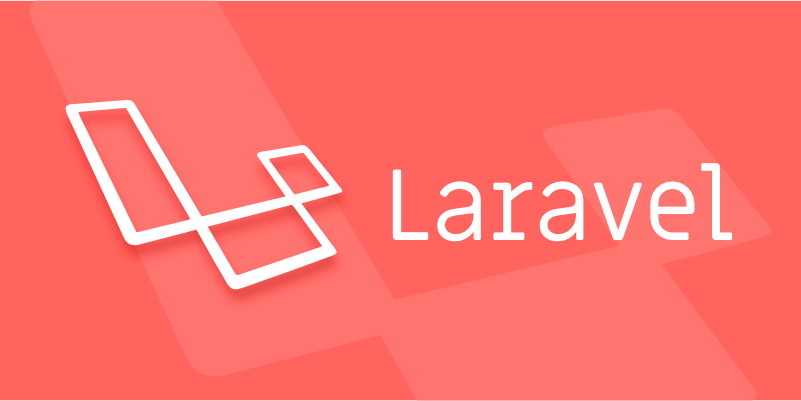Laravel Eloquent Relationships provides five main types: 1. One-to-one uses hasOne and belongsTo; 2. One-to-many uses hasMany and belongsTo; 3. Many-to-many uses belongsToMany and creates intermediate tables; 4. Indirect association uses hasManyThrough; 5. Polymorphic association uses morphTo and morphMany. Each relationship is achieved by defining methods in the model. Eloquent automatically processes underlying queries, making data access more intuitive and efficient.

Laravel Eloquent Relationships: A Practical Guide

Laravel's Eloquent ORM makes working with database relationships in PHP both intuitive and powerful. If you're building a Laravel app and need to connect models — like users to posts, orders to products, or categories to articles — Eloquent relationships are the way to go. This guide breaks down the most common relationship types with clear examples you can use right away.
1. One-to-One Relationship
Use this when one record in a table is linked to exactly one record in another table.

Example: A User has one Profile .
Database Setup
// users table
Schema::create('users', function (Blueprint $table) {
$table->id();
$table->string('name');
$table->string('email');
$table->timestamps();
});
// profiles table
Schema::create('profiles', function (Blueprint $table) {
$table->id();
$table->foreignId('user_id')->constrained()->onDelete('cascade');
$table->string('phone')->nullable();
$table->text('bio')->nullable();
$table->timestamps();
});Model Definition
// User.php
public function profile()
{
return $this->hasOne(Profile::class);
}
// Profile.php
public function user()
{
return $this->belongsTo(User::class);
}Usage
$user = User::find(1);
echo $user->profile->bio;
// Create profile for user
$user->profile()->create([
'phone' => '123-456-7890',
'bio' => 'Laravel developer'
]);Note:
hasOneexpects the foreign key on the related model (profiles.user_id).
2. One-to-Many Relationship
Used when a single record can have multiple related records.
Example: A User has many Posts .
Database Setup
// posts table
Schema::create('posts', function (Blueprint $table) {
$table->id();
$table->foreignId('user_id')->constrained();
$table->string('title');
$table->text('body');
$table->timestamps();
});Model Definition
// User.php
public function posts()
{
return $this->hasMany(Post::class);
}
// Post.php
public function user()
{
return $this->belongsTo(User::class);
}Usage
$user = User::find(1);
foreach ($user->posts as $post) {
echo $post->title;
}
// Create a post
$user->posts()->create([
'title' => 'My First Post',
'body' => 'Hello World'
]);3. Many-to-Many Relationship
Used when both sides can have multiple records from the other side. Requires a pivot table.
Example: User belongs to many Roles , and a Role can belong to many Users .
Database Setup
// roles table
Schema::create('roles', function (Blueprint $table) {
$table->id();
$table->string('name');
$table->timestamps();
});
// role_user pivot table (or use roles_users)
Schema::create('role_user', function (Blueprint $table) {
$table->foreignId('user_id')->constrained()->onDelete('cascade');
$table->foreignId('role_id')->constrained()->onDelete('cascade');
$table->primary(['user_id', 'role_id']);
});Model Definition
// User.php
public function roles()
{
return $this->belongsToMany(Role::class);
}
// Role.php
public function users()
{
return $this->belongsToMany(User::class);
}Usage
$user = User::find(1);
foreach ($user->roles as $role) {
echo $role->name;
}
// Attach a role
$user->roles()->attach($roleId);
// Sync roles (replace all)
$user->roles()->sync([1, 2, 3]);
// With pivot data (eg, timestamps or extra fields)
$user->roles()->attach($roleId, ['created_at' => now()]);Tip: Laravel automatically infers the pivot table name from the singular models in alphabetical order (
role_user). You can override it by passing a second argument:
belongsToMany(Role::class, 'user_roles')
4. Has Many Through
Use when you want to access distant relationships via an intermediate model.
Example: A Country has many Posts through its Users .
Model Setup
// Country.php
public function posts()
{
return $this->hasManyThrough(Post::class, User::class);
}Assumes:
-
countries→users(country_id) →posts(user_id)
Usage
$country = Country::find(1);
foreach ($country->posts as $post) {
echo $post->title;
}5. Polymorphic Relationships
Use when a model can belong to more than one other model on a single association.
Example: Both Post and User can have Image s.
Database Setup
// images table
Schema::create('images', function (Blueprint $table) {
$table->id();
$table->string('url');
$table->morphs('imageable'); // Creates imageable_type and imageable_id
$table->timestamps();
});Model Definition
// Image.php
public function imageable()
{
return $this->morphTo();
}
// Post.php
public function images()
{
return $this->morphMany(Image::class, 'imageable');
}
// User.php
public function images()
{
return $this->morphMany(Image::class, 'imageable');
}Usage
$post = Post::find(1); $image = $post->images()->create(['url' => 'photo.jpg']); // Get the owner of the image $image = Image::find(1); $owner = $image->imageable; // Returns Post or User instance
Bonus: Defining Custom Foreign Keys
Sometimes your column names don't follow Laravel's convention.
// Custom foreign key return $this->belongsTo(User::class, 'author_id'); // Custom primary key on related model return $this->belongsTo(User::class, 'author_id', 'uuid');
Summary of Relationship Methods
| Relationship | Method in Model A | Method in Model B |
|---|---|---|
| One to One | hasOne(B::class)
|
belongsTo(A::class)
|
| One to Many | hasMany(B::class)
|
belongsTo(A::class)
|
| Many to Many | belongsToMany(B::class)
|
belongsToMany(A::class)
|
| Has Many Through | hasManyThrough(C::class, B::class)
|
— |
| Polymorphic | morphMany() / morphTo()
|
Same on both sides |
Eloquent relations make your Laravel code cleaner and more expressive. Start with the basics — hasOne , hasMany , and belongsTo — then expand to belongsToMany and polymorphic types as your app grows.
Basically, define the relationship once in your model, and Eloquent handles the joins and queries for you.
The above is the detailed content of Laravel Eloquent relationships tutorial. For more information, please follow other related articles on the PHP Chinese website!

Hot AI Tools

Undress AI Tool
Undress images for free

Undresser.AI Undress
AI-powered app for creating realistic nude photos

AI Clothes Remover
Online AI tool for removing clothes from photos.

Clothoff.io
AI clothes remover

Video Face Swap
Swap faces in any video effortlessly with our completely free AI face swap tool!

Hot Article

Hot Tools

Notepad++7.3.1
Easy-to-use and free code editor

SublimeText3 Chinese version
Chinese version, very easy to use

Zend Studio 13.0.1
Powerful PHP integrated development environment

Dreamweaver CS6
Visual web development tools

SublimeText3 Mac version
God-level code editing software (SublimeText3)

Hot Topics
 How to use PHP to develop a Q&A community platform Detailed explanation of PHP interactive community monetization model
Jul 23, 2025 pm 07:21 PM
How to use PHP to develop a Q&A community platform Detailed explanation of PHP interactive community monetization model
Jul 23, 2025 pm 07:21 PM
1. The first choice for the Laravel MySQL Vue/React combination in the PHP development question and answer community is the first choice for Laravel MySQL Vue/React combination, due to its maturity in the ecosystem and high development efficiency; 2. High performance requires dependence on cache (Redis), database optimization, CDN and asynchronous queues; 3. Security must be done with input filtering, CSRF protection, HTTPS, password encryption and permission control; 4. Money optional advertising, member subscription, rewards, commissions, knowledge payment and other models, the core is to match community tone and user needs.
 Guide to matching Laravel routing parameter passing and controller method
Jul 23, 2025 pm 07:24 PM
Guide to matching Laravel routing parameter passing and controller method
Jul 23, 2025 pm 07:24 PM
This article aims to resolve common errors in the Laravel framework where routing parameter passing matches controller methods. We will explain in detail why writing parameters directly to the controller method name in the routing definition will result in an error of "the method does not exist", and provide the correct routing definition syntax to ensure that the controller can correctly receive and process routing parameters. In addition, the article will explore best practices for using HTTPDELETE methods in deletion operations.
 Data_get practice for dynamic access to model association properties in Laravel Livewire
Jul 23, 2025 pm 06:51 PM
Data_get practice for dynamic access to model association properties in Laravel Livewire
Jul 23, 2025 pm 06:51 PM
This article aims to solve how to efficiently and securely access deep properties associated with model through string paths when dynamically rendering data in LaravelLivewire components. When you need to obtain specific fields of the associated model based on a configuration string (such as "user.name"), access using object properties will fail. The article will introduce Laravel's data_get helper function in detail and provide code examples to show how to use it to solve this problem gracefully and ensure the flexibility and robustness of data acquisition.
 How to develop AI intelligent form system with PHP PHP intelligent form design and analysis
Jul 25, 2025 pm 05:54 PM
How to develop AI intelligent form system with PHP PHP intelligent form design and analysis
Jul 25, 2025 pm 05:54 PM
When choosing a suitable PHP framework, you need to consider comprehensively according to project needs: Laravel is suitable for rapid development and provides EloquentORM and Blade template engines, which are convenient for database operation and dynamic form rendering; Symfony is more flexible and suitable for complex systems; CodeIgniter is lightweight and suitable for simple applications with high performance requirements. 2. To ensure the accuracy of AI models, we need to start with high-quality data training, reasonable selection of evaluation indicators (such as accuracy, recall, F1 value), regular performance evaluation and model tuning, and ensure code quality through unit testing and integration testing, while continuously monitoring the input data to prevent data drift. 3. Many measures are required to protect user privacy: encrypt and store sensitive data (such as AES
 How to set environment variables in PHP environment Description of adding PHP running environment variables
Jul 25, 2025 pm 08:33 PM
How to set environment variables in PHP environment Description of adding PHP running environment variables
Jul 25, 2025 pm 08:33 PM
There are three main ways to set environment variables in PHP: 1. Global configuration through php.ini; 2. Passed through a web server (such as SetEnv of Apache or fastcgi_param of Nginx); 3. Use putenv() function in PHP scripts. Among them, php.ini is suitable for global and infrequently changing configurations, web server configuration is suitable for scenarios that need to be isolated, and putenv() is suitable for temporary variables. Persistence policies include configuration files (such as php.ini or web server configuration), .env files are loaded with dotenv library, and dynamic injection of variables in CI/CD processes. Security management sensitive information should be avoided hard-coded, and it is recommended to use.en
 How to make PHP container support automatic construction? Continuously integrated CI configuration method of PHP environment
Jul 25, 2025 pm 08:54 PM
How to make PHP container support automatic construction? Continuously integrated CI configuration method of PHP environment
Jul 25, 2025 pm 08:54 PM
To enable PHP containers to support automatic construction, the core lies in configuring the continuous integration (CI) process. 1. Use Dockerfile to define the PHP environment, including basic image, extension installation, dependency management and permission settings; 2. Configure CI/CD tools such as GitLabCI, and define the build, test and deployment stages through the .gitlab-ci.yml file to achieve automatic construction, testing and deployment; 3. Integrate test frameworks such as PHPUnit to ensure that tests are automatically run after code changes; 4. Use automated deployment strategies such as Kubernetes to define deployment configuration through the deployment.yaml file; 5. Optimize Dockerfile and adopt multi-stage construction
 Deep analysis of matching Laravel routing parameter transfer and controller method
Jul 23, 2025 pm 07:15 PM
Deep analysis of matching Laravel routing parameter transfer and controller method
Jul 23, 2025 pm 07:15 PM
This article deeply explores the correct transmission of routing parameters and the matching mechanism of controller methods in the Laravel framework. In response to the common "method does not exist" error caused by writing routing parameters directly to the controller method name, the article elaborates on the correct way to define routing, that is, declare parameters in the URI and receive them as independent parameters in the controller method. At the same time, the article also provides code examples and suggestions on best practices for HTTP methods, aiming to help developers build more robust and RESTful Laravel applications.
 Laravel routing parameter passing: correctly define the controller method and routing binding
Jul 23, 2025 pm 07:06 PM
Laravel routing parameter passing: correctly define the controller method and routing binding
Jul 23, 2025 pm 07:06 PM
This article discusses the correct posture of parameter transfer of controller method in Laravel routing in depth. In response to common errors caused by writing routing parameters directly to the controller method name, the correct routing definition syntax is explained in detail, and the mechanism of Laravel automatic parameter binding is emphasized. At the same time, the article recommends using HTTPDELETE method that is more in line with RESTful specifications to handle deletion operations to improve the maintainability and semantics of the application.







